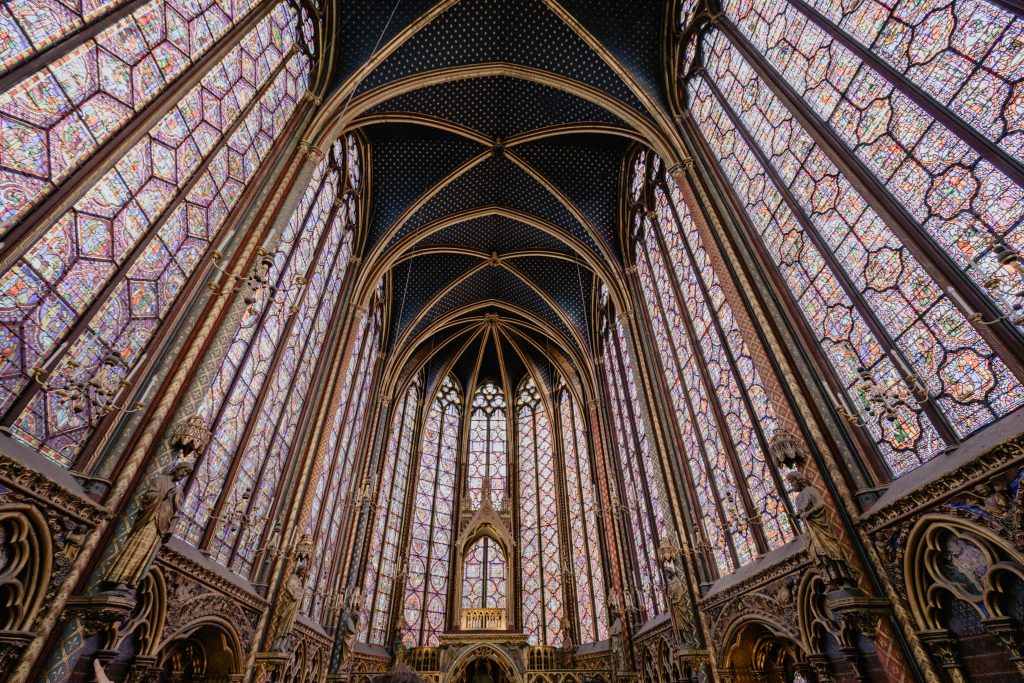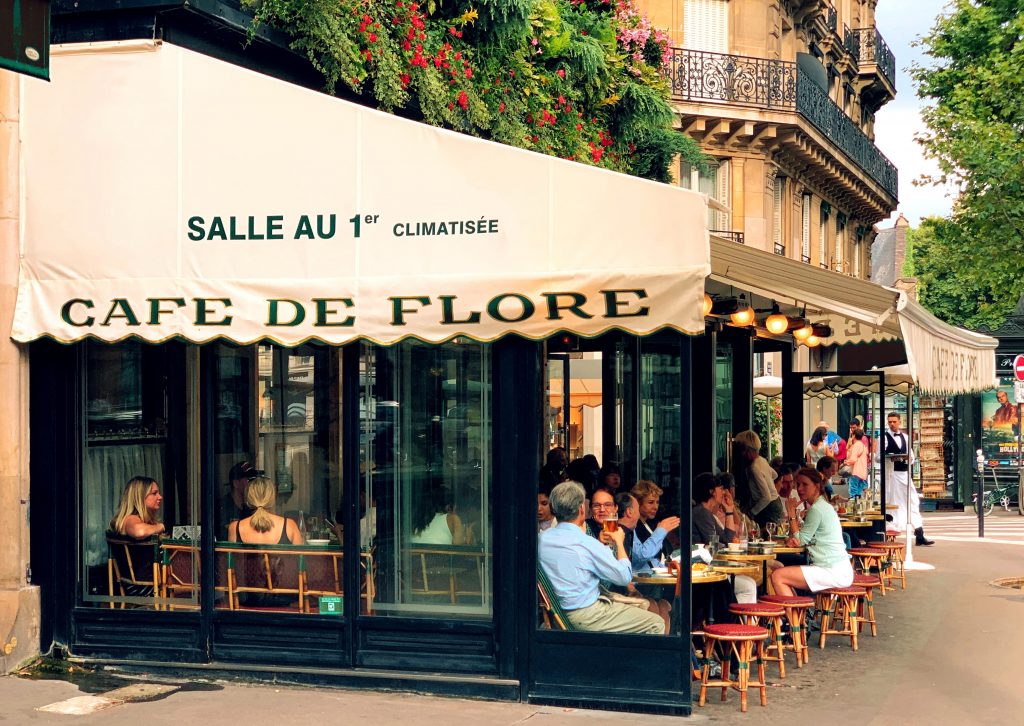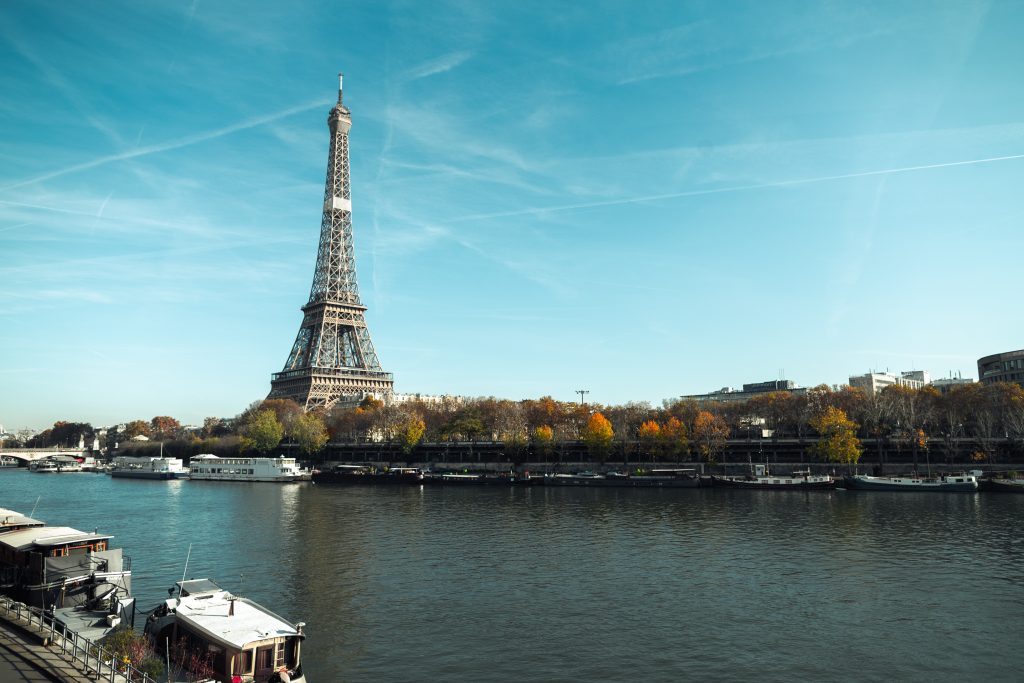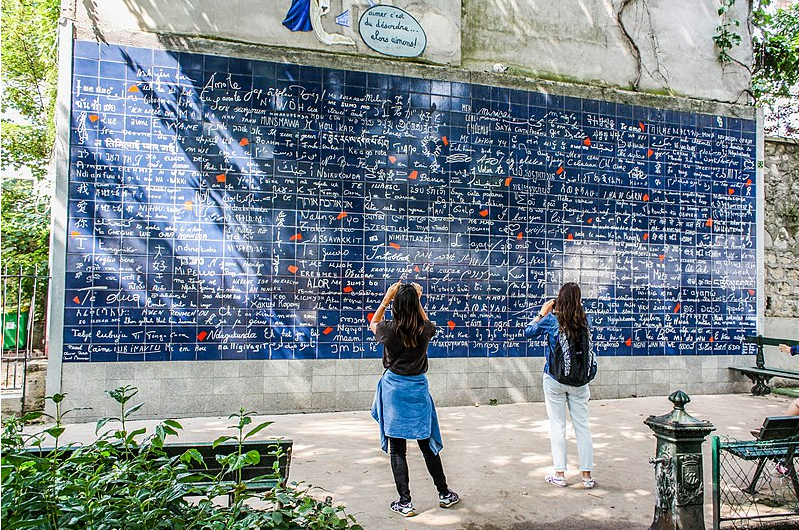Paris is comprised of twenty different arrondissements, or administrative districts. Beginning in central Paris with the first arrondissement, which is the location of the Louvre, the Tuileries Gardens and the Palais Royal, the arrondissements spread out clockwise in a spiral. As you move further from the city center, the numbers of the districts get higher. The arrondissements are then further broken down into smaller quartiers, or neighborhoods. What makes Paris so exciting is that every neighborhood has its own unique atmosphere. In this article we’ll explore some of the most iconic neighborhoods in Paris and break down the city by its different vibes.
The most central arrondissements in Paris are the 1rst, 2nd, 3rd and 4th. The true center of Paris is not the first arrondissement, however, but the fourth. This is the location of the Ile-de-la-Cite, where Paris began as Lutetia during the Gallo-Roman era. On the Ile-de-la-Cite you’ll find the icons of medieval Paris: Notre Dame, the Sainte-Chapelle and the Conciergerie. When Paris was reorganized and modernized by the Emperor Napoleon III and his city planner Baron Haussmann, the fourth arrondissement was largely spared of the destruction which occurred around most of the city. This is why, on the Ile-de-la-Cite you’ll find narrow, winding medieval streets that can make you feel as though you’ve stepped back in time. On the smaller island to the east, the Ile St. Louis, you’ll also find this sense of calm. The streets and residences on this island, however, date from the 17th century. Here you’ll discover discreet and elegant hotel particuliers, or grand townhouses of the aristocracy. The famous ice cream parlor Berthillon is located in this neighborhood, on the Rue St. Louis en Ile. While you’re strolling in this serene oasis in the middle of Paris, stop by the Place Louis Aragon at the tip of the island to sit and admire the Seine as she flows by.

Crossing the Seine at the nearby Pont Louis-Philippe will take you to the Marais district. This historically aristocratic neighborhood was also (thankfully) largely spared during the modernization of Paris in the 19th century, allowing it to retain its charm. At the heart of the Marais you will find the elegant Place des Vosges, a formal royal square dating from the 17th century. The former royal palace is the perfect example of the Classical French architectural style dating from this time period. The red brick arcades of the Place des Vosges are now the location of several art and design galleries, cafes and restaurants. The entire Marais district is filled with trendy boutiques, high-end fashion shops and art galleries. Many of the former hotel particuliers in this area have now been transformed into museums, including the Picasso Museum, the Carnavalet Museum (dedicated to the history of Paris) and the Museum of the Art and History of Judaism. The Marais is the location of the historically Jewish neighborhood of Paris, known as “the Pletzl” (the little place in Yiddish), centered around the Rue des Rosiers. On this medieval street you can visit Kosher butchers, bakeries and delicatessens. Aside from its rich Jewish history, the Marais is also the heart of the LGBT community in Paris with a great number of gay bars, clubs and hotels.

On the opposite side of the river lies the sixth arrondissement, home to the iconic St. Germain des Pres neighborhood. This charming quartier of Paris has a rich cultural history, as it has long been an epicenter of arts and literature in Paris. Starting at the St. Germain des Pres church, which is the oldest in Paris, you’ll find the famous literary cafes across the street – Les Deux Magots, Cafe de Flore and Brasserie Lipp. In addition to numerous bookshops that dot the neighborhood’s streets, St. Germain des Pres is the home to many prestigious contemporary and modern art galleries, centered around the Rue de Seine. You’ll also find the vibrant Rue de Buci, this pedestrian street has a bustling food market and several popular cafes and restaurants.
The nearby seventh arrondissement is home to the Carre Rive Gauche, an association of 70 art and antique dealers located in the streets near the Quai Voltaire and Rue du Bac. This elegant and refined area was historically where many art and antique dealers set up shop due to its proximity to the Louvre Museum and the Ecole des Beaux Arts (the Fine Arts school of Paris). Many of the grand hotel particuliers of the seventh arrondissement are now used as government buildings or embassies for other nations. You will also come across the Hotel Biron, which is now home to the Rodin Museum. Not far from the Invalides is one of the liveliest market streets in Paris, the Rue Cler. This vibrant cobblestone street has a fabulous selection of food shops, bakeries and great cafes. A pedestrian only thoroughfare, Rue Cler is the perfect street to go to for food shopping and then enjoying a coffee en terrasse while people watching. Located perpendicularly to the Rue Cler is the Rue St. Dominique, where you’ll also find great restaurants and many high-end boutiques. The Rue St. Dominique also boasts an iconic view of the nearby Eiffel Tower. Located under the shadow of the Eiffel Tower, the seventh arrondissement is at the same time glamorous and serene.

If you cross the Seine at the beautiful Pont Alexandre III, you’ll find yourself in Paris’ chic eighth arrondissement, the home of the Champs Elysees. Aside from Paris’ most famous avenue, this sophisticated arrondissement is where you’ll find designer shopping, luxury hotels designers and upscale dining. Heading to the northeast will take you to the fashionable Parc Monceau, bordered by quiet residential neighborhoods of the seventeenth arrondissement. Located a bit to the northeast is the trendy and quirky Batignolles district. This neighborhood has a village like atmosphere and is at the same time stylish yet familial.
Next to the Batignolles is arguably Paris’ most famous neighborhood, Montmartre. As the case with the other outer arrondissements, Montmartre was not incorporated into the city of Paris until 1860. Even after it became part of Paris, village like Montmartre still retained its unique and independent atmosphere. This quintessentially bohemian neighborhood has attracted artists since the mid-nineteenth century and was the preferred quartier of the Impressionists, like Claude Monet and Auguste Renoir. All throughout Montmartre are reminders of its rich artistic history including several locations captured in famous Impressionist artworks like the Moulin de la Galette, immortalized by Renoir. It is also possible to see where artists like Vincent Van Gogh and Henri Toulouse-Lautrec lived, as well as the former artist studio of Pablo Picasso. The narrow streets and alleys of Montmartre are adorned with street art and contemporary art installations, like the famous “I Love You Wall.”

Lower Montmartre is home to the Pigalle neighborhood, a formerly seedy area known for its nightlife. This is the location of the iconic Moulin Rouge. Today eclectic Pigalle is filled with bars and the Rue des Martyrs is a hip spot for restaurants and cafes.
Continuing southwards from Pigalle will bring you to Paris’ ninth arrondissement, towards area known as the Grands Boulevards, which stretches into the second arrondissement. Named after the wide avenues created during the reorganization of Paris during the 1860s, this district’s vibe is a throw back to Paris during the Belle Epoque. This lively neighborhood is the location of iconic Parisian department stores: Printemps and Galeries Lafayette as well as the opulent Palais Garnier, the Paris Opera. In addition to the Palais Garnier, there are numerous theaters in this district where you can see musical theater, comedy and vaudeville type shows. There are also iconic concert halls like the Grand Rex and the Olympia. Here you’ll also find Paris’ famed covered passages such as the Passage des Princes, Passage Verdeau and Passage Joufroy. These passages date from the mid-nineteenth century and were the first type of covered shopping centers.
If you make your way to the Eastern parts of Paris, the eleventh arrondissement is perhaps the most hip area of the city. This trendy arrondissement includes cool neighborhoods like Bastille and Oberkampf. The working class Bastille neighborhood is known for its fun nightlife and bars, and for its bobo “bourgeois bohemian” vibe. But Bastille is also artistic and home to many galleries and craft studios, including the unique Viaduct des Arts, an old train line. Here you’ll find 50 studios which have been built into the vaults of the former viaduct.
Between Bastille and Republique you’ll find Oberkampf, a very lively and eclectic district which has great street art. A bit off the beaten track, Oberkampf is a favorite among students and younger Parisians. Oberkampf is also home to the Atelier des Lumieres, the new digital art exhibition space which opened in 2018.
In the Northeast corner of Paris is the nineteenth arrondissement, a working class area which has recently become more and more popular. This largely residential district has two of the largest parks in Paris: the Parc des Buttes Chaumont and the Parc de la Villette. La Villette is a cultural hub and is the location of the Philharmonie de Paris. This symphony hall is the largest in the world and was built by renowned architect Jean Nouvel. Because of its industrial and working class history, this arrondissement has been undergoing a lot of exciting urban regeneration projects.
These are just some of the many diverse neighborhoods in Paris. We hope this will inspire you to discover new parts of the city and find out which vibe is your favorite.
If you want to book a tour with My Private Paris: click here !
Article written by Sarah



